Painting can be a tough job. particularly when applying layers upon layers to get the ideal finishing. Thus, using a primer is the initial stage in this procedure. It sets the base for the painting. Just like paint it’s also white in color and doesn’t look much different than the normal white paint that goes on most walls.
So, can you leave primer unpainted since it already makes the walls look like it’s painted over?
No, you can’t leave primer unpainted. They create the base, increase the paint’s lifespan, and reduce the number of paint coats needed. They cannot replace the paint. So, if it’s left unpainted it causes a lack of uniformity, sticky bases, and some serious wall damage.
If you are still not clear about what we meant? Then let’s look at the matters in detail to have a clear understanding.
What is Primer?
A primer is a preliminary coat applied to a surface before the application of paint. It is typically a paint-like substance, but it is distinct from the final coat of paint in its composition and purpose. The primer is designed to prepare and condition the surface for the paint to be applied.
The Key Purposes of Primer:
Improving Adhesion: one of the primary functions of primer is to enhance the adhesion of the paint to the surface. It creates a sturdy bond between the surface and the topcoat, which ends up in better paint durability and toughness.
Sealing and Smoothing: Primer acts as a sealant, particularly on porous or uneven surfaces. It prevents the surface from absorbing excessive amounts of paint and helps create a smooth and uniform foundation for the final paint layer. Without primer, the paint might be absorbed unevenly, leading to an inconsistent finish.
Stain Blocking: In some cases, surfaces may have stains, discolorations, or marks that can bleed through the paint. Primer can effectively block these stains from showing through the final paint coat, ensuring a clean and blemish-free finish.
Promoting durability: Primer is instrumental in enhancing the overall durability and sturdiness of the paint task. That is especially vital for outside surfaces that are exposed to weather, UV rays, and different environmental factors.
Enhancing Paint Color: In addition to its functional roles, primer can also influence the final color of the paint. For instance, using a white primer can make the final paint color appear brighter and more true to its intended shade.
Different Types of Primers: Their Uses and Benefits:
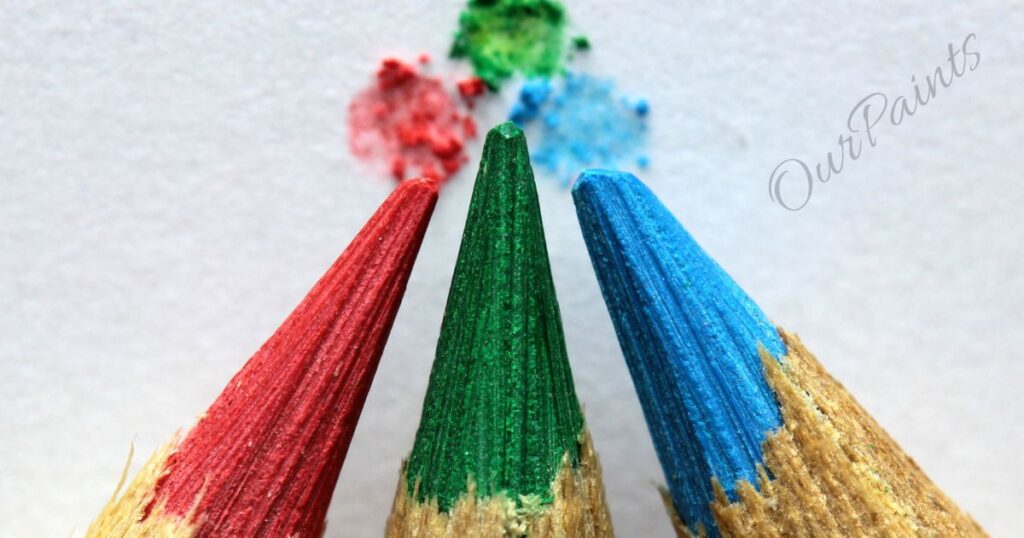
Here are some common types of primers:
Latex Primer:
Use Interior surfaces, such as walls and ceilings.
Benefits: Easy to clean up with water, dries quickly, and has low odor. It’s a versatile choice for many interior applications.
Oil-Based Primer:
Use: Suitable for interior and exterior surfaces.
Benefits: Provides excellent adhesion, stain-blocking, and durability. It’s effective in preventing water and tannin bleed, but it has a strong odor and requires mineral spirits for cleanup.
Shellac Primer:
Use: Primarily for interior applications.
Benefits: Excellent at sealing in odors, including smoke and pet odors. It also prevents tannin bleed from wood and offers good stain-blocking properties.
Bonding Primer:
Use: Adheres to challenging surfaces, such as glossy or non-porous materials.
Benefits: Improves adhesion to surfaces that are typically hard to paint, like glass, tile, and laminate. It prepares these surfaces for paint application.
Stain-Blocking Primer:
Use: For surfaces with stains, water damage, or other discolorations.
Benefits: Specifically formulated to effectively block and hide stains, ensuring they don’t bleed through the final paint coat.
Alkyd Primer:
Use: Ideal for exterior wood surfaces.
Benefits: Provides excellent adhesion and durability, making it suitable for priming wooden surfaces, including trim and siding.
Rust-Inhibiting Primer:
Use: Specifically for metal surfaces, especially those prone to rust.
Benefits: Contains rust-inhibiting agents that prevent rust from forming on the surface. It creates a protective barrier for metal.
Masonry Primer:
Use: For masonry and concrete surfaces, including bricks and stucco.
Benefits: Helps paint adhere to porous masonry surfaces and provides protection against efflorescence and moisture penetration.
Wood Primer:
Use: Designed for bare wood surfaces.
Benefits: Seals the wood, preventing the absorption of paint and reducing grain rise. It provides a smooth surface for paint application.
High-Build Primer:
Use: For surfaces with imperfections or damage.
Benefits: Contains a high level of solids, allowing it to fill in surface imperfections, such as cracks, small holes, and minor damage.
Adhesive Primer:
Use: For surfaces like PVC, plastic, and certain metals.
Benefits: Enhances the adhesion of paint to tricky surfaces and improves paint durability.
Tinted Primer:
Use: Applied before painting with specific colors.
Benefits: Tinted primers are formulated to closely match the color of the final paint, making it easier to achieve even and consistent coverage.
Tips for choosing the right primer for your project:
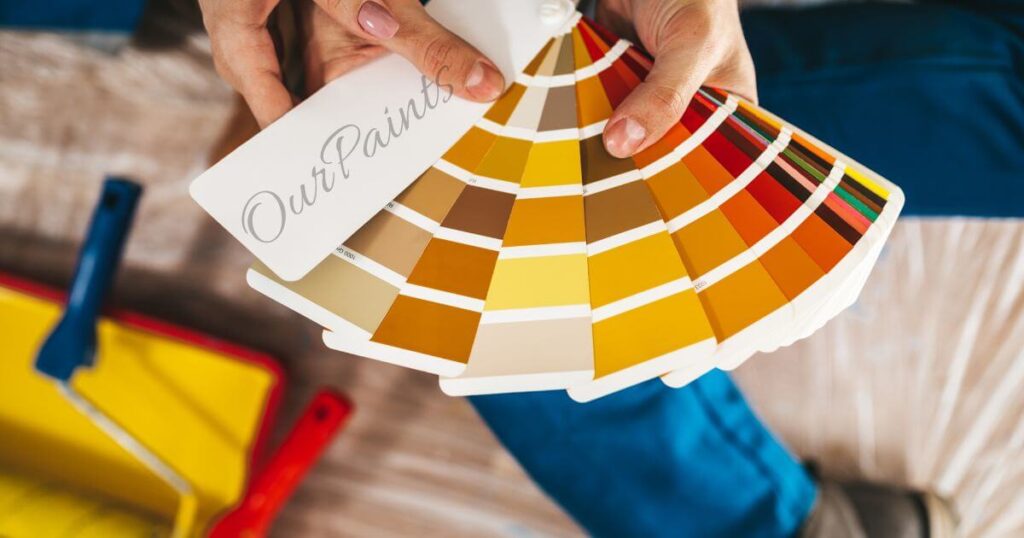
Here are some tips for choosing the right primer for your project:
Surface Assessment:
Before selecting a primer, carefully evaluate the surface you intend to paint. Consider factors such as the material (wood, metal, masonry, etc.), condition (new or previously painted), and any existing issues like stains or damage.
Understand Your Paint:
Know the type of paint you plan to use as it can influence your primer choice. For instance, oil-based primers are often used with oil-based paints, while water-based primers pair well with latex paints.
Determine the Primer Type:
Identify the specific type of primer that suits your needs. For example, if you’re dealing with a stain issue, opt for a stain-blocking primer. If you’re painting a challenging surface like glass, choose a bonding primer.
Consider the Surface Porosity:
Porous surfaces like bare wood or drywall may require a high-quality, high-build primer to seal and provide a smooth base. Non-porous surfaces may require an adhesive primer for better adhesion.
Indoor or Outdoor Use:
Decide if your project is indoors or outdoors. Exterior primers are formulated to withstand the elements and protect against UV rays and moisture.
Think About Stain Resistance:
If you’re dealing with a surface prone to stains, ensure your primer has good stain-blocking properties. This is especially important in areas like kitchens and bathrooms.
Check for Specialized Needs:
Specialized primers like masonry or metal primers may be necessary for certain surfaces. For instance, masonry primer helps the paint adhere to porous materials like bricks.
Consider Environmental Impact:
Some primers may have a higher environmental impact due to volatile organic compounds (VOCs). If you’re concerned about this, look for low-VOC or VOC-free options.
Consult Manufacturer Recommendations:
Always follow the manufacturer’s recommendations for both the paint and primer. They provide guidance on compatibility and best practices.
Test on a Small Area:
If you’re unsure about a primer’s suitability, conduct a small test on an inconspicuous area. This will help you gauge adhesion, coverage, and the overall result.
Seek Professional Advice:
If you’re uncertain about primer selection or have a complex project, consider consulting with a paint professional or the staff at a paint store. They can offer valuable guidance based on your specific needs.
Can you leave the primer unpainted?
You can technically leave primer unpainted, but it’s generally not recommended for most situations. Primer is specifically designed as a preparatory coating for paint, and it serves several important functions to ensure the success and longevity of a paint job.
Here are some reasons why leaving primer unpainted is not commonly advised:
Appearance:
Primer typically does not have the same visual appeal as a final coat of paint. It may have a different sheen or texture, which can make it look unfinished and unprofessional.
Protection:
Primer is not as durable or protective as paint. Leaving primer exposed, especially on exterior surfaces, can result in it breaking down more quickly and potentially lead to damage to the underlying material.
Uniformity:
Primer is meant to provide a consistent and smooth surface for paint application. Leaving it unpainted may result in an uneven and inconsistent appearance.
Aesthetic:
In most cases, an unpainted primer can appear unfinished and may not be suitable for projects that require a polished and attractive appearance.
Longevity:
Paint is what primarily provides protection and color to a surface. Without paint, the primer alone may not stand up well to wear and tear, and the surface may require more frequent maintenance or recoating.
There are some situations where leaving primer unpainted might be acceptable. For example, if the primer is of a similar color to the desired paint color, and it looks aesthetically pleasing in your specific context, you might be able to leave it exposed.
It’s important to carefully consider the factors mentioned above and determine whether the trade-offs are acceptable for your project. In most cases, applying the intended finish paint over the primer is recommended to achieve the desired appearance and protection.
What Happens If You Leave Your Primer Without Paint?
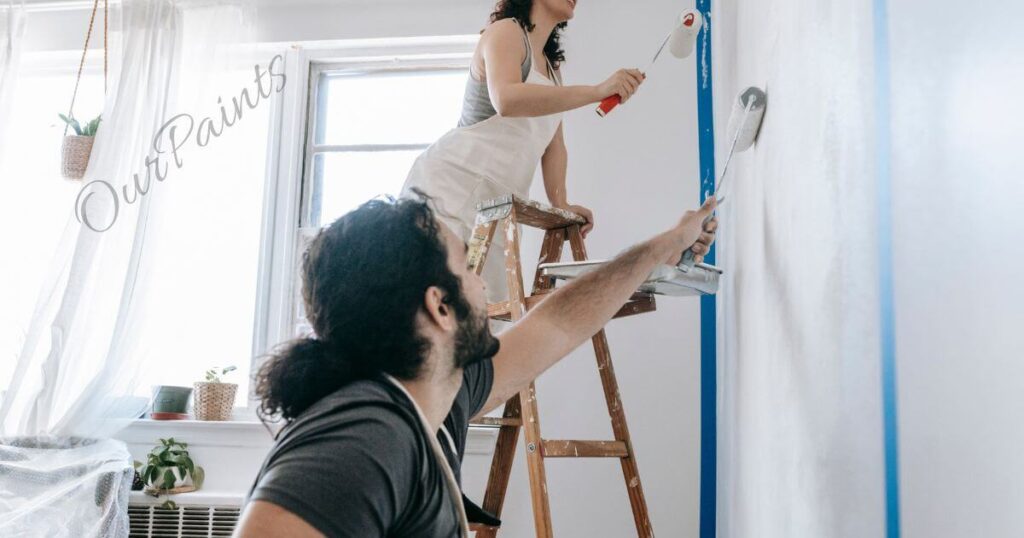
Leaving primer without paint can have several consequences, depending on the type of primer and the surface it’s applied.
Here are some of the potential outcomes:
Aesthetic Issues:
Unpainted primer typically has a different appearance than the intended finish paint. It may have a different texture or sheen, which can make the surface look unfinished and unprofessional. In most cases, leaving primer exposed is not advisable for aesthetic reasons.
Reduced Protection:
Primer alone does not provide the same level of protection as paint. When the primer is left unpainted, it can be more susceptible to wear and damage. This is particularly important for exterior surfaces exposed to the elements, where paint provides a protective barrier.
Inconsistency:
Primer is used to create a uniform and consistent surface for paint application. Leaving primer unpainted may result in an uneven and inconsistent appearance, with variations in texture and color.
Durability:
Paint is designed to withstand the wear and tear that surfaces are subjected to. Without paint, the primer may not hold up as well over time, especially in high-traffic or exterior areas.
Maintenance:
Surfaces with unpainted primer may require more frequent maintenance. Over time, the primer may break down, peel, or discolor, necessitating repainting or touch-ups.
Longevity:
Paint provides a protective layer that can extend the life of the surface. Leaving primer unpainted may result in a shorter lifespan for the surface, as it won’t have the same level of protection against environmental factors.
How Long Can You Leave Primer Unpainted?
The length of time you can leave primer unpainted largely depends on various factors, including the type of primer used, the surface it’s applied to, and the environmental conditions. Here are some considerations:
Type of Primer:
Many types of primer have varying durability when left unpainted. For example, oil-based or shellac primers tend to be more durable than water-based primers when exposed to the elements. The specific type of primer you’ve used can impact how long it can be left unpainted.
Indoor vs. Outdoor:
Indoor surfaces that have been primed but left unpainted may not be subjected to the same weathering and wear as outdoor surfaces. On indoor surfaces, the primer may be left unpainted for a longer period without significant issues.
Environmental Conditions:
Exposure to sunlight, humidity, temperature fluctuations, and other environmental factors can affect the longevity of primers left unpainted. Harsher climates may cause the primer to deteriorate more quickly.
Primer Quality:
The quality of the primer itself can influence how long it can be left unpainted. High-quality primers are generally more durable and resistant to deterioration.
Surface Material:
The material of the surface matters. For example, wood surfaces may benefit from having primer left unpainted for a shorter duration compared to metal or masonry surfaces.
Purpose:
Consider the purpose of the surface. If the surface is meant to be purely functional and not for aesthetic purposes, such as an unfinished basement or utility room, you might leave primer unpainted for an extended period.
Important considerations when deciding to leave primer unpainted:
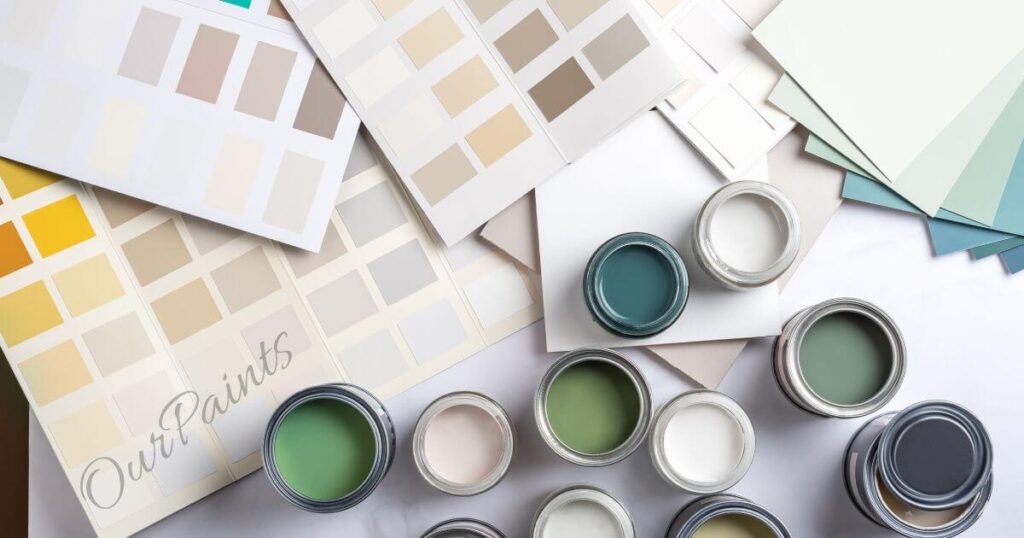
Here are some important considerations to keep in mind when making this decision:
Aesthetic Intention:
If you have a specific artistic or design intention for leaving primer unpainted, make sure it aligns with your vision and the overall look you want to achieve. Unpainted primers can create unique textures and finishes in some cases.
Surface Type:
Consider the material of the surface you’ve primed. Some materials, like wood, may be more susceptible to damage or staining if the primer is left exposed for an extended period.
Location:
The location of the primed surface matters. Interior surfaces are generally less exposed to environmental elements than exterior surfaces, so leaving primer unpainted indoors may be more viable.
Durability and Protection:
Primer provides a base level of protection and adhesion, but it is not as durable as paint. Leaving primer exposed can result in reduced longevity and durability, especially in outdoor settings.
Maintenance:
Unpainted primers may require more frequent maintenance. It could need repainting or touch-ups sooner than a surface with a full paint coat.
Intended Use:
Consider how the surface will be used. If it’s a high-traffic area or subject to regular wear and tear, leaving primer unpainted may not be practical.
Environmental Conditions:
Evaluate the environmental conditions the surface will be exposed to. Harsher conditions, such as direct sunlight, moisture, or extreme temperature fluctuations, can accelerate the breakdown of primer left unpainted.
Long-Term Plans:
Think about your long-term plans for the surface. If it’s a temporary solution or if you intend to paint it at a later date, that may influence your decision.
Testing:
Conduct a small test in an inconspicuous area to observe how the primer behaves when left unpainted. This can help you assess the impact on the surface over time.
Alternative Finishes:
Explore alternative finishes like clear sealers or topcoats that can provide protection and a finished appearance without the need for traditional paint.
Professional Guidance:
If you’re unsure about whether to leave primer unpainted, consult with a professional or seek advice from experts at a paint store. They can provide specific recommendations based on your project’s requirements.
Common misconceptions about leaving primer unpainted:
Here are some common misconceptions about leaving primer unpainted:
Primer Is a Finish Coat:
One of the most common misconceptions is that primer can serve as a final finish coat. While some primers may have a paint-like appearance, they lack the durability, protection, and aesthetic qualities of paint. The primer is designed as a preparatory layer, not a final finish.
Is It Possible To Leave Primer Unpainted Forever? According to some, there are no repercussions if the primer is left unpainted for an extended period of time. Nevertheless, a number of variables, such as the kind of primer, the surface material, and the surrounding circumstances, affect how long untreated primer lasts. If left outside in the weather, it might eventually decay.
Primer Provides Full Protection:
Primer provides a level of adhesion and sealing, but it does not offer the same level of protection as paint. Some mistakenly believe that primer alone is sufficient to protect surfaces from environmental factors like UV rays, moisture, and wear and tear.
Primer Can Be Used as a Decorative Finish:
While some artistic and decorative applications involve leaving primer exposed for aesthetic reasons, this approach is not suitable for all surfaces. Using primer as a decorative finish requires careful planning and consideration of the surface and intended design.
Primer Is Only for New Surfaces:
Primer is not limited to new surfaces. It can also be used on previously painted surfaces to improve adhesion for a new coat of paint or to address specific issues like stains and discolorations.
Unpainted Primer Is Low Maintenance:
Leaving primer unpainted does not necessarily mean low maintenance. Unpainted primer may require more frequent maintenance and recoating than a fully painted surface to prevent deterioration.
Primer Can Be Left Unpainted for Any Surface:
The suitability of leaving primer unpainted depends on the type of surface. Some surfaces may be more forgiving than others when left unpainted, while others may be more prone to damage and staining.
Primer Color Does Not Matter:
The color of the primer can affect the final appearance of the paint. For example, using a white primer can make the paint color appear brighter and truer to its intended shade. The primer color does matter when achieving specific paint colors.
Risks and drawbacks of leaving primer unpainted:
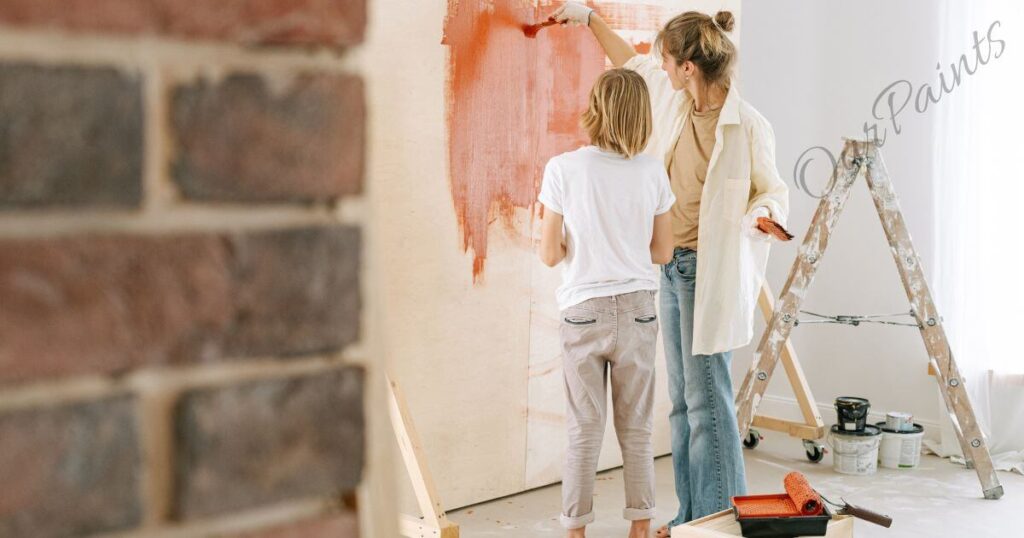
Here are some common risks and drawbacks associated with leaving primer unpainted:
Aesthetic Concerns:
Unpainted primer typically lacks the polished and finished appearance of a painted surface. It may have a different texture, sheen, or color, which can make it look unfinished or unprofessional. This is a significant aesthetic drawback.
Reduced Durability:
Primer alone is not as durable as paint. Leaving primer unpainted may result in the surface being more susceptible to damage, wear, and staining, particularly on exterior surfaces exposed to the elements.
Inconsistent Appearance:
Primer is meant to create a uniform and consistent surface for paint application. Leaving it unpainted can lead to an uneven and inconsistent appearance, with variations in texture and color.
Potential Staining:
Unpainted primers may be more prone to staining, especially on surfaces that are exposed to substances like food, beverages, or other materials that can leave marks.
Environmental Exposure:
Exterior surfaces with unpainted primer may be more vulnerable to damage from environmental factors such as sunlight (UV rays), moisture, and temperature fluctuations. Primer does not provide the same level of protection as paint.
Increased Maintenance:
Unpainted primers may require more frequent maintenance. Over time, it may deteriorate, peel, or discolor, necessitating repainting or touch-ups. This can result in higher maintenance costs and effort.
Potential for Surface Degradation:
Unpainted primer may not hold up well over time, especially on surfaces that experience high levels of use or exposure. This can lead to the degradation of the surface material itself.
Inconsistent Color:
The color of the primer can impact the final appearance of the paint. Leaving a primer of a different color exposed may affect the desired color of the paint when applied later.
Incompatibility:
Some primers may not be suitable for use as an exposed finish. Using the wrong type of primer or a low-quality product can lead to adhesion issues and a subpar result.
Professional Appearance:
In many settings, unpainted primers can appear unprofessional and unfinished. This is especially important for projects that require a polished and appealing appearance.
Conclusion:
The decision to leave primer unpainted is not one to be taken lightly. While there are creative and practical situations where it can be a deliberate choice, it comes with its own set of considerations, risks, and drawbacks.
Primarily, it’s essential to remember that primer is designed as a preparatory layer, not a final finish. It serves crucial roles in promoting paint adhesion, providing a uniform surface, and offering limited protection. Leaving primer unpainted can result in a less polished appearance, reduced durability, and a need for more frequent maintenance.
When contemplating leaving primer unpainted, the specific type of primer, the surface material, and the environmental exposure should be taken into account. Additionally, the intended use and the aesthetic outcome of the project play a significant role in the decision-making process.
Whether or not to leave primer unpainted depends on your vision and the requirements of your project. If it aligns with your goals, it can yield unique and artistic results. However, it’s crucial to make an informed decision based on the factors mentioned throughout this discussion to achieve the best outcome for your specific situation.
FAQs About Can You Leave Primer Unpainted:
Can I leave the primer unpainted for aesthetic reasons?
Yes, you can leave primer unpainted for artistic or decorative purposes. Unpainted primers can create unique textures and finishes. However, this choice should align with your vision and the intended look of the project.
How long can I leave the primer unpainted without issues?
The duration primer can be left unpainted depends on various factors, including the type of primer, surface material, and environmental conditions. Monitor the condition regularly, and consider applying paint within a few weeks for exterior surfaces.
Is it suitable to leave primer unpainted on exterior surfaces?
Answer: Leaving primer unpainted on exterior surfaces is generally not recommended. Primer does not offer the same level of protection as paint and can be more vulnerable to environmental damage. Applying paint is the better choice for long-term durability.
What are the potential drawbacks of leaving primer unpainted?
Some drawbacks include reduced durability, aesthetic concerns, potential staining, and increased maintenance. Unpainted primers may not provide the polished appearance and protection that paint does.
Can I use tinted primer and leave it unpainted?
Tinted primer can be used for aesthetic reasons, but the same considerations apply. Leaving tinted primer unpainted may affect the final appearance and color. If this is your intention, it should align with your project’s vision and goals.

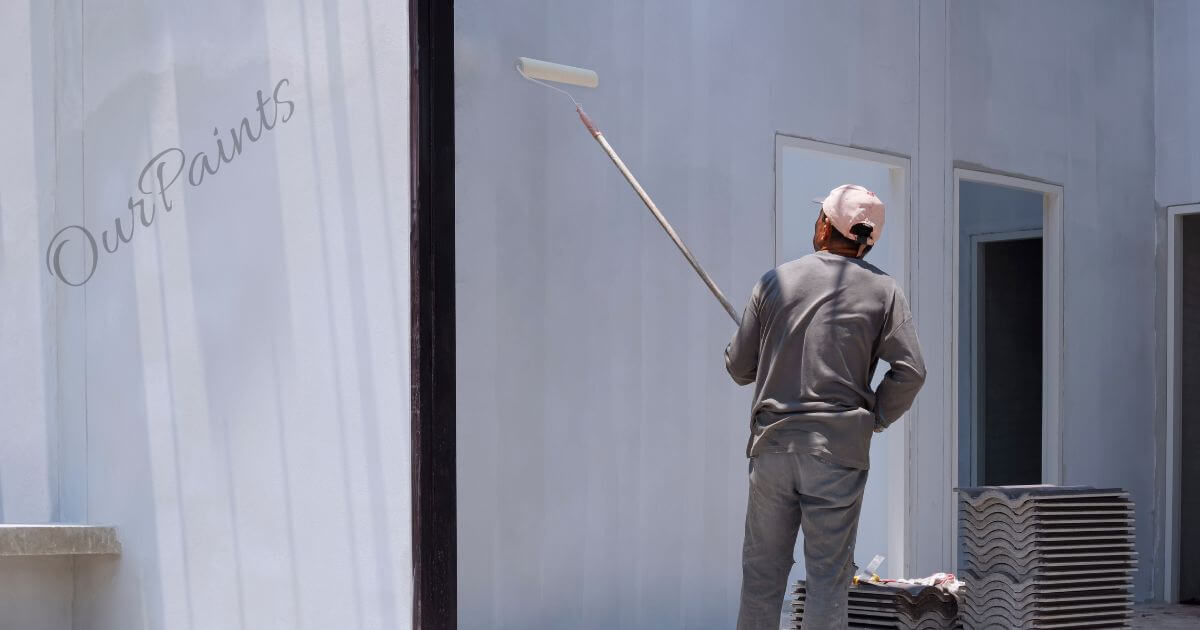
Princess Emily, Annabel Redd, The Hemp Honey Only Fans Leaks Mega Folder Link( https://UrbanCrocSpot.org/ )